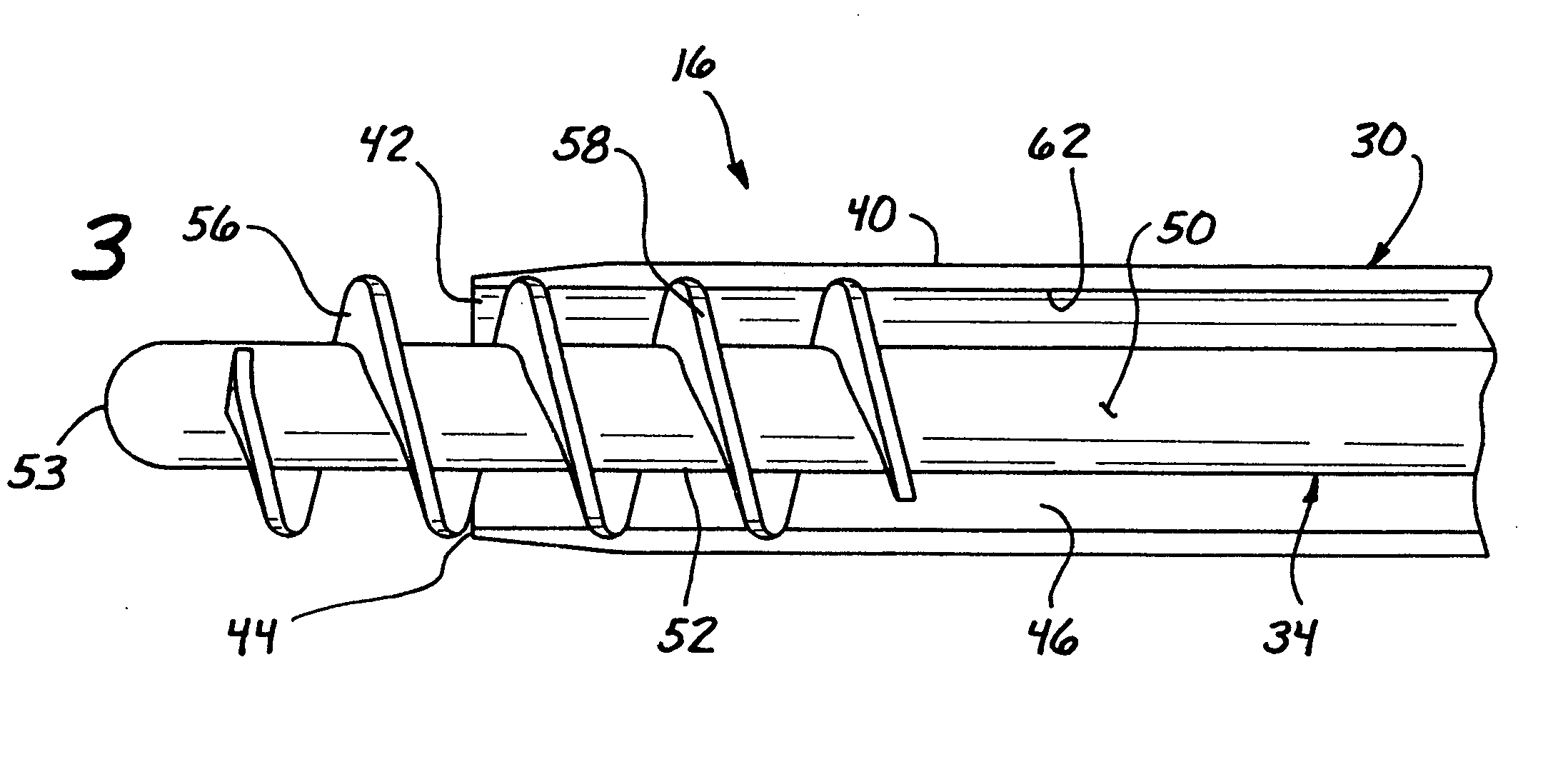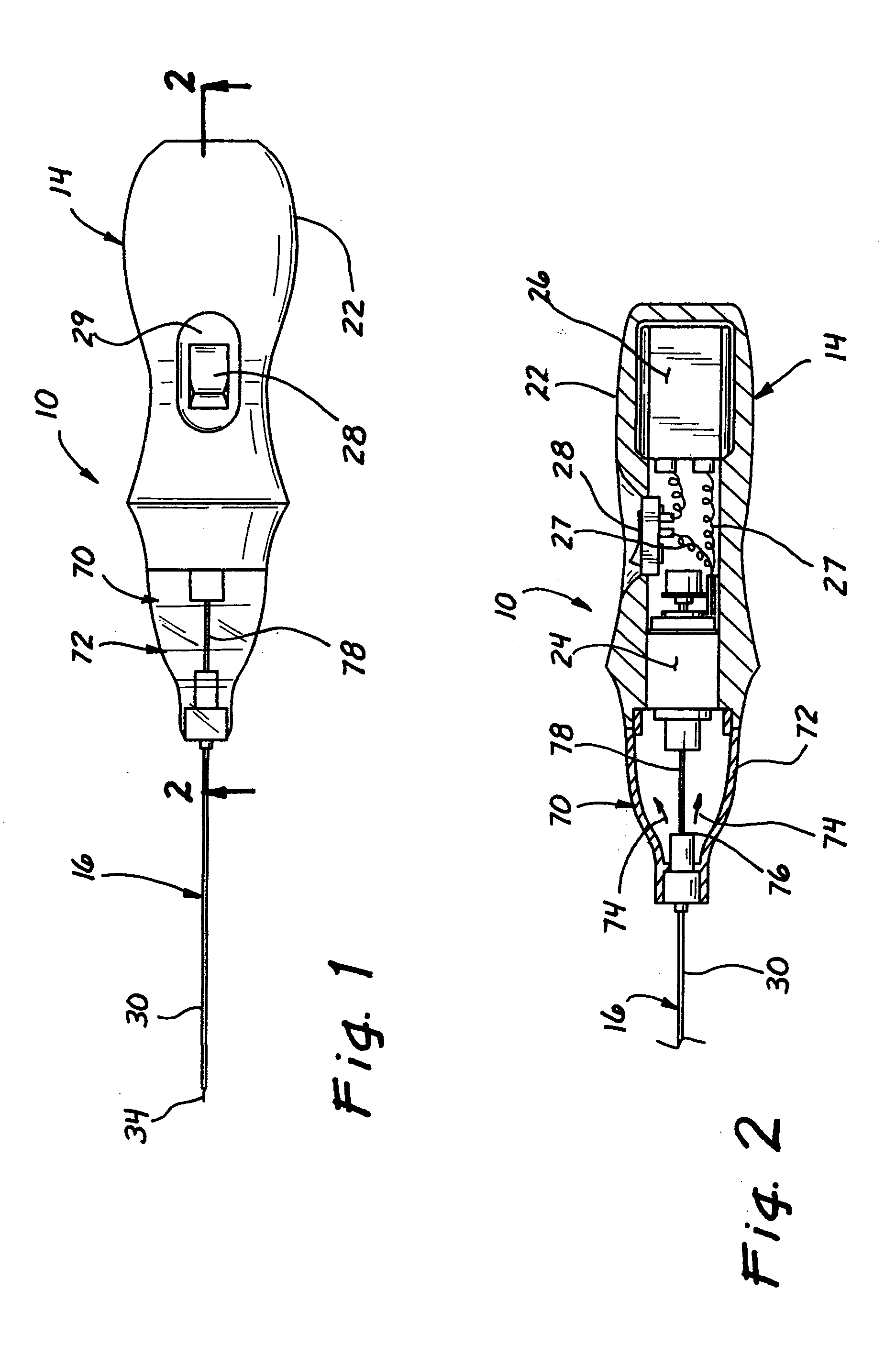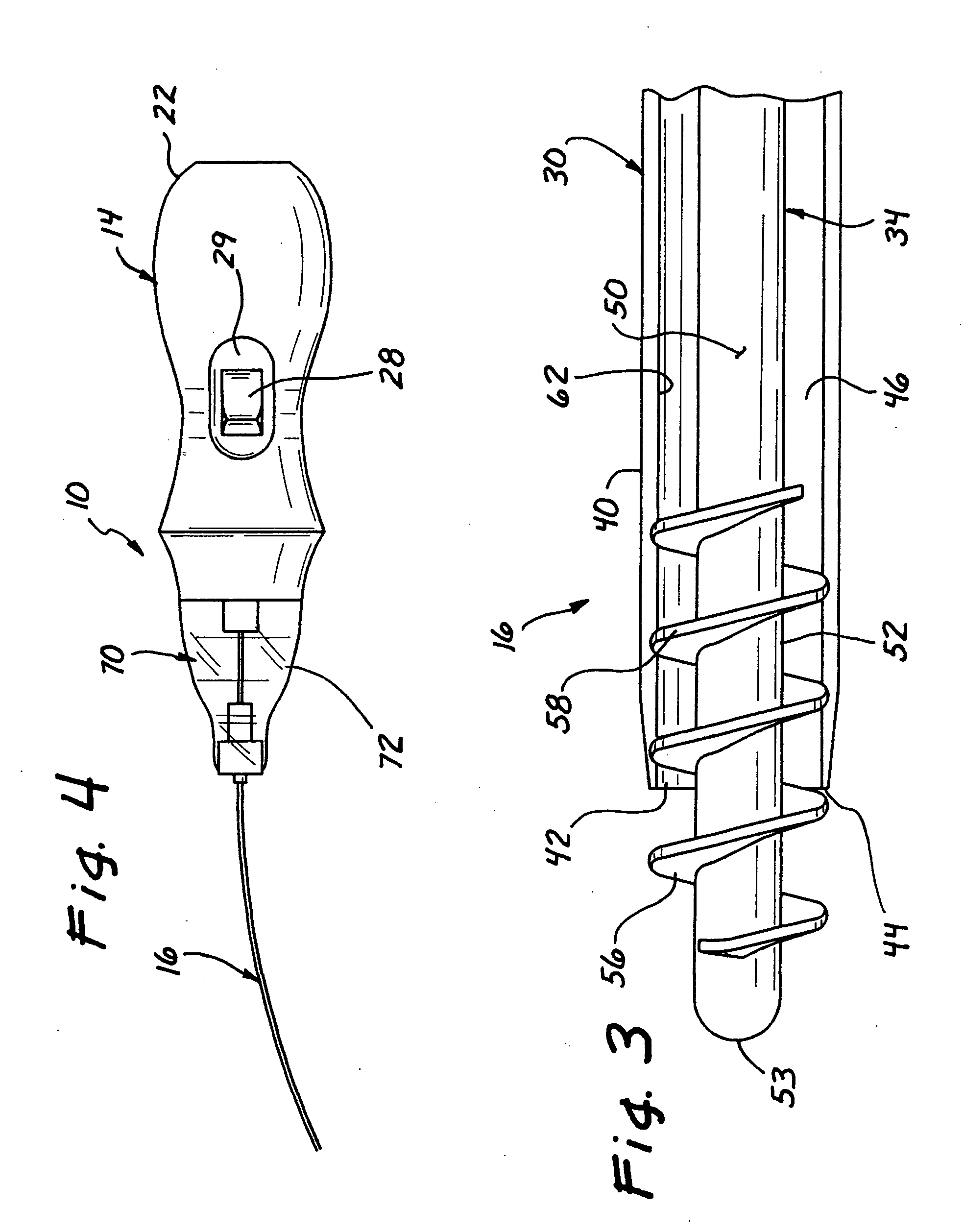Micro-invasive tissue removal device
a tissue removal and micro-invasive technology, applied in the field of medical devices and methods, can solve the problems of requiring a great deal of manual dexterity and motor coordination, extremely poor cutting action, and wasting material storage energy,
- Summary
- Abstract
- Description
- Claims
- Application Information
AI Technical Summary
Benefits of technology
Problems solved by technology
Method used
Image
Examples
Embodiment Construction
[0041] Turning now to FIGS. 1 and 2, a micro-invasive tissue removal apparatus in accordance with the present invention is shown generally at 10. The apparatus 10 generally comprises a handpiece 14 and a tissue removal mechanism 16 to be described in detail hereinafter.
[0042] The handpiece 14 is preferably sized and contoured to fit comfortably within a palm of a surgeon, and includes for example a molded plastic housing 22. As shown in FIG. 2, the housing 22 of the handpiece 14 encloses a small motor 24 and a power supply, for example a 9 volt battery 26 for driving the tissue removal mechanism 16. Suitable electrical connectors 27 are provided. For convenient, one handed operation, an ON / OFF switch 28 is preferably provided on a recessed, lateral portion 29 of the housing 22.
[0043] Turning now as well to FIG. 3, the tissue removal mechanism 16 generally includes a cannula 30 and a rotatable element 34 disposed therein. As shown most clearly in FIG. 3, the cannula 30 includes a d...
PUM
 Login to View More
Login to View More Abstract
Description
Claims
Application Information
 Login to View More
Login to View More - R&D
- Intellectual Property
- Life Sciences
- Materials
- Tech Scout
- Unparalleled Data Quality
- Higher Quality Content
- 60% Fewer Hallucinations
Browse by: Latest US Patents, China's latest patents, Technical Efficacy Thesaurus, Application Domain, Technology Topic, Popular Technical Reports.
© 2025 PatSnap. All rights reserved.Legal|Privacy policy|Modern Slavery Act Transparency Statement|Sitemap|About US| Contact US: help@patsnap.com



